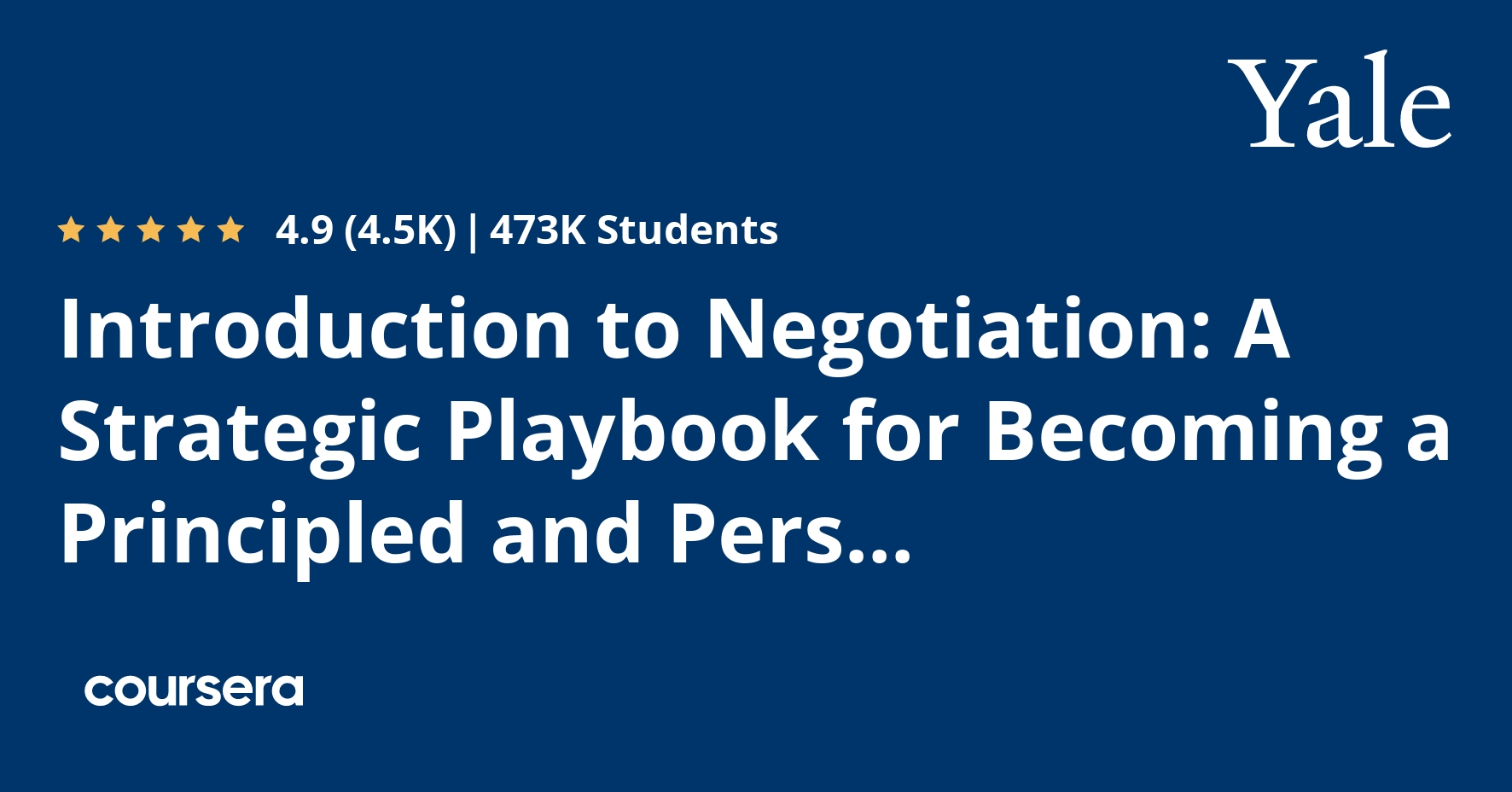Description
This course will help you be a better negotiator. Unlike many negotiation courses, we develop a framework for analyzing and shaping negotiations. This framework will allow you to make principled arguments that persuade others. It will allow you to see beneath the surface of apparent conflicts to uncover the underlying interests. You will leave the course better able to predict, interpret, and shape the behavior of those you face in competitive situations.
In this course, you will have several opportunities to negotiate with other students using case studies based on common situations in business and in life. You can get feedback on your performance and compare what you did to how others approached the same scenario. The cases also provide a setting to discuss a wide-ranging set of topics including preparing for a negotiation, making ultimatums, avoiding regret, expanding the pie, and dealing with someone who has a very different perspective on the world. Advanced topics include negotiating when you have no power, negotiating over email, and the role of gender differences in negotiation. To close out the course, we will hear insights from three negotiation experts: Linda Babcock, Herb Cohen, and John McCall MacBain. Enjoy.
What you will learn
Introduction / What is the Pie?
I’ve promised that this course will help you be a better, smarter, more strategic negotiator. To do that, we begin by laying a foundation for negotiation, a theory of the “pie.” Over the years, I’ve discovered even the most experienced negotiators tend to lack a framework that grounds their approach to negotiation. While some folks try to bully their way to a larger share, most people make arguments that sound fair to them. But what sounds fair to them often doesn’t sound fair to the other side. Their criteria for what’s fair may be biased in their favor. The theory of the pie is useful because it doesn’t depend on which side you are taking. It provides principles that will change the way you approach negotiations—in this course and in life. It will allow you to make arguments that persuade others. That’s why I am teaching you about it first.
Negotiation Caselets
You’ve got the theory. Now let’s use it. I’ll show how the pie framework applies to some mini cases, or caselets. The Merger Case considers how the synergy gains from a merger will be shared by the two parties. While this is still a stylized case, you’ll see how it directly applies to some very real merger negotiations. “Start By Asking” shares a salary negotiation done by one of my students and provides a chance to introduce the idea of one’s reservation value, or BATNA. You’ll also learn why it’s best to never say no. We end the week with our first interactive exercise—the Ultimatum Game. Here you have an opportunity to negotiate with your fellow classmates and with me. You also have the first mastery quiz for the course. I’ve tried to make it as much a learning opportunity as it is a test of your ability to apply the concepts presented.
Zincit Case
The Zincit case provides an opportunity to discuss a wide-ranging set of topics including how to prepare for a negotiation, making ultimatums, alternating removals, avoiding regret, expanding the pie, and dealing with someone who has a very different perspective on the world.
Outpsider Case
Our second case study is more difficult. Here each party has some hidden information to which the other is not privy. Much like real life, neither party has enough information to figure out a solution on his or her own. Sharing and revealing information thus becomes a critical part of the negotiation. What should each party share? What should they keep to themselves? This case provides an opportunity to discuss critical questions around revealing information, along with some negotiation tactics: who should make the first offer, what the first offer should look like, and how you should respond to threats.





